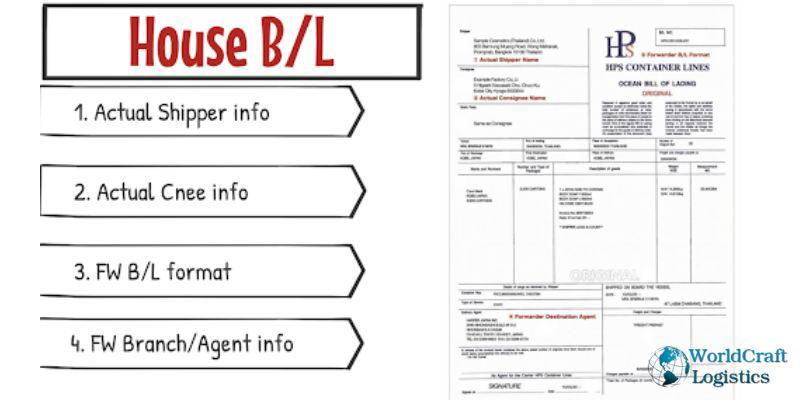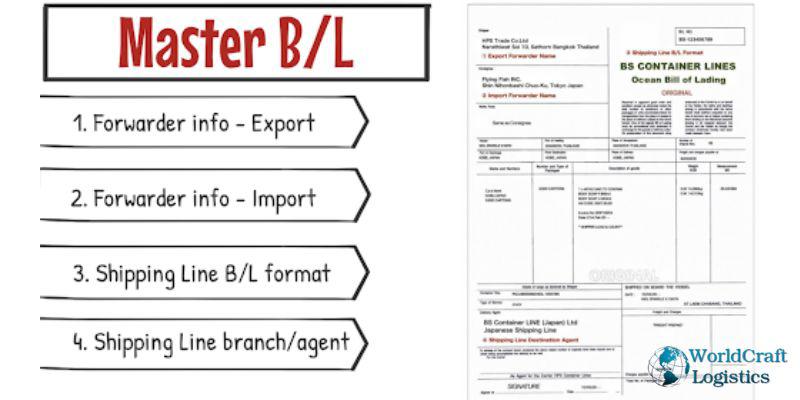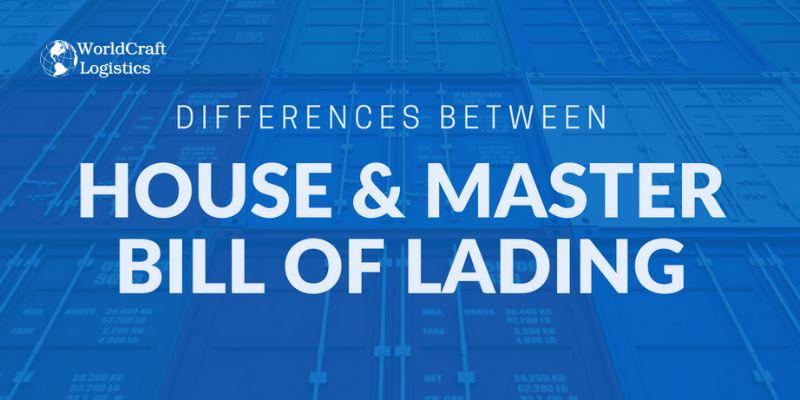
Starting June 1st, 2023 Our warehouse fee will be $0.65/cubic foot per month
In effort to lower the warehouse storage fee during inflation, we have went narrow aisle racking.This construction took us four months but the project is finally completed. With narrow aisle racking, we are able to drop storage by 24%.We as partners will go through this inflation together.
03/05/2024
You have undoubtedly heard of a master bill of lading and a house bill of lading if you work in shipping or logistics. However, if you're like the majority of us, you might not recognize the differences between them.
As you can see, there are various uses for bills of lading and they come in various forms. What distinguishes a master bill of lading from a house bill of lading, then? Let Worldcraft Logistics explore that topic in this article.

A non-vessel operating company (NVOCC) or freight forwarder will provide a house bill of lading (HBL) to the shipper as confirmation that their goods have been received for shipping. It's a receipt for the items, to put it another way.
The company that hires a freight forwarder, also known as an NVOCC or forwarding agent, to arrange the transportation of its goods to a foreign location is known as the shipper, which is the exporting company. Next, the NVOCC or freight forwarder reserves cargo space with carriers.
The companies that physically transfer shipments, such as shipping lines, trucking companies, and aircraft, are known as carriers. While some freight forwarders work with independent carriers, others provide carrier services internally.

The contract of carriage for the goods is represented by a document issued by a carrier, called a master bill of lading (MBL). The party who scheduled the freight, either the shipper or the freight forwarder, will get the MBL from the carrier once it has verified receipt of the items.
The following describes how both kinds of bills of lading could be applied to a shipment going overseas:
Four boxes of solid gold need to be shipped from the United States to Zimbabwe by Exporting Company A. To arrange the shipment, Exporting Company A sends a request to the Freight Forwarding Company. The cartons are picked up from Exporting Company A's warehouse by the freight forwarding company. At this stage, Exporting Company A receives a house bill of lading from Freight Forwarding Company. The house bill of lading acts as a receipt certifying that the items have been picked up.

After evaluating the costs and carrier availability, Freight Forwarding Company determines that Carrier Company is the best option for transporting the gold shipment to Zimbabwe. However, they also determine that this same business is the best option for transporting products from other exporters to Zimbabwe, including eight pallets of textiles made of hemp fiber from Exporting Company C and six crates of school supplies from Exporting Company B.
Carrier Company collects the three shipments from Freight Forwarding Company and consolidates them because they are all headed for Zimbabwe. Rather than providing three different bills of lading, Carrier Company provides Freight Forwarding Company with a single master bill of lading that functions as both a contract for the carriage and a receipt confirming they have picked up all the items for delivery to their destination.
A master bill of lading may cover the shipments of several exporters when they are combined by the carrier into a single, larger shipment, whereas a house bill of lading is always a receipt for a shipment from a single exporter.
Whereas the MBL is issued by a carrier to either the shipper or the forwarding agent, depending on who booked the carriage, the HBL is issued by the freight forwarder or NVOCC to a single exporter. The cargo transfer from the forwarder to the carrier is represented by the MBL, and it may originate from many exporters.
SEO
Digital Marketing/SEO Specialist
Simon Mang is an SEO and Digital Marketing expert at Wordcraft Logistics. With many years of experience in the field of digital marketing, he has shaped and built strategies to effectively promote Wordcraft Logistics' online presence. With a deep understanding of the logistics industry, I have shared more than 500 specialized articles on many different topics.

Education
01/05/2025

Education
02/18/2025

Education
01/01/2024

Education
08/28/2024

Education
11/13/2023